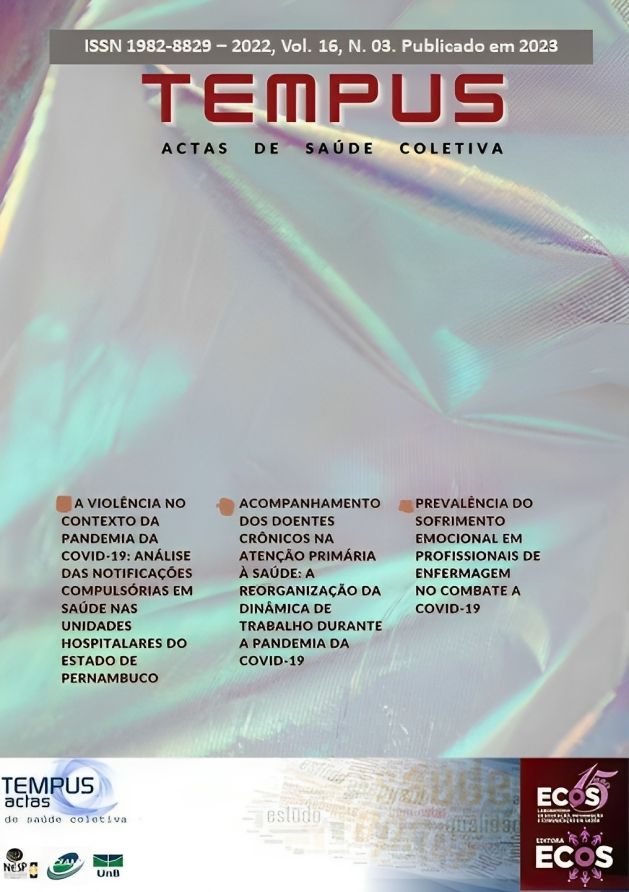Abstract
This is an exploratory research, with a qualitative and quantitative approach, whose objective is to carry out a critical-reflexive analysis of violence in the context of the pandemic based on compulsory health notifications in hospitals in the state of Pernambuco. The guiding question of the research was: “To what extent do the compulsory notifications of health violence in hospital units in the State of PE reveal such violence during the Covid-19 Pandemic?” Therefore, it started from the understanding that violence is an indicator of health problems and, therefore, its existence must be notified by hospital units so that coping policies can be formulated and executed. The research was elaborated from the quantitative and comparative analysis of the numbers of notifications of interpersonal/self-inflicted violence from the period before the pandemic and during the pandemic on the CIEVS-PE and DataSUS-PE platforms, in addition, the weaknesses of the notifications were investigated from from the bibliographic research combined with the researcher's practical experience in the multiprofessional residency in urgency, emergency and trauma. The results confirmed the research expectations indicating that violence increased during the COVID-19 pandemic, although notifications have decreased compared to the period before the pandemic, confirming the low number of notifications. Complementing the underreporting, other weaknesses were found, such as the problems that prevent health teams from carrying out the notification and that, consequently, lead to underreporting and the deficit in coping policies that are due, in part, to the statistics of notification of violence that do not reality is reliable. It was concluded that the reports of violence have important weaknesses, weaknesses that were intensified in. In this regard, it is indicated that problems related to notifications are addressed in order to effectively confront violence.
A Tempus garante critérios rigorosos, por meio de avaliação sistemática. Os autores se responsabilizam pela veracidade e ineditismo do trabalho cabendo a eles a cessão de direitos de publicação à revista. A confiabilidade dos conteúdos e a marca própria de apresentação tem como objetivo uma comunicação personalizada, adaptada aos padrões da revista, na medida em que adota critérios de excelência exigidos por seus usuários e especialistas, considerando os rigores da comunicação científica. Os autores devem especificar sua contribuição individual na concepção, delineamento, execução do trabalho, análise ou interpretação dos dados, redação e aprovação final do manuscrito. Incluir Fontes de financiamento e de apoio logístico das pesquisas. Ao final da submissão do artigo, os autores devem enviar uma declaração de cessão de direitos de publicação à Revista TEMPUS , assinada e no formato PDF (Portable Document Format ): Modelo da declaração de cessão de direitos.
